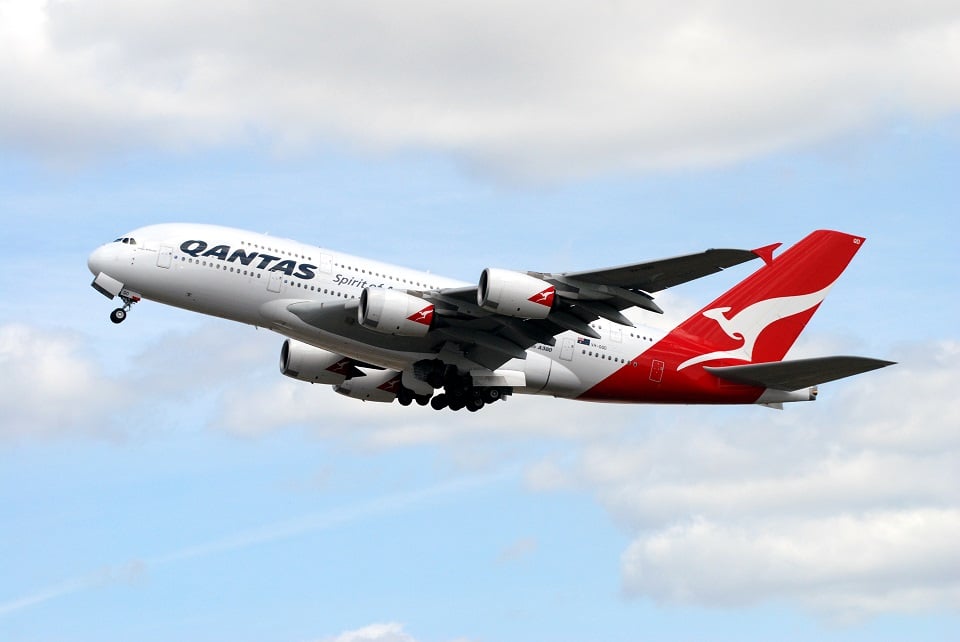Aviation
Thai Airways ban fat passengers and young parents from business class seats on their new Boeing 787-9

BANGKOK: Passengers intending to fly business class on Thai Airways’ (THAI) new Boeing 787-9 Dreamliner aircraft will have to first pass the waist test.
Flight Lieutenant Pratthana Pattanasirim, THAI’s director of security and flight standard division, said on Friday that a passenger with waist wider than 56 inches cannot fly business class on Boeing 787-9.
He explained that the business class seats have been installed with new safety belts and airbag system by the manufacturer in accordance with the safety standards of the US Federal Aviation Administration.
The safety belt cannot accommodate a passenger whose waist is larger than 56 inches.
Pratthana said the new safety-belt system cannot accommodate a parent with a child sitting on his or her lap hence parents travelling with young children also cannot fly business class on the Dreamliner.
THAI received the two Dreamliner planes in September last year and on March 6 announced that passengers with waist wider than 56 inches and carrying a lap-held infant could not fly business class.
Pratthana’s clarifications on Friday came in the wake of Thai papers carrying headlines that the airline had banned “fat people from flying the Dreamliner”. – The Nation/Asia News Network

Aviation
Lost Tool Found in Qantas A380 After 34 Flights

An Australian Transportation Safety Bureau (ATSB) investigation recently revealed that a Qantas A380 operated 34 flights with a 1.25-meter nylon tool lodged in one of its engines.
This turning tool, used during borescope inspections to rotate the intermediate-pressure compressor, was left behind during scheduled maintenance at Los Angeles on December 6, 2023. It remained inside the engine until it was discovered by maintenance staff during a subsequent check at Los Angeles on January 1, 2024.
China Takes the Lead in Sixth-Generation Fighters with White Emperor B
The ATSB report highlights two critical lapses. First, maintenance engineers failed to notice the tool during final checks for foreign objects after the borescope inspection. Second, the lost tool procedure was not activated when the tool was identified as missing.
The certifying engineer ultimately cleared the aircraft for service without accounting for the misplaced tool. During the time qantas films the tool was inside, the A380 completed 34 flight cycles, accumulating nearly 294 hours without any noticeable effect on engine performance.
Although the tool was deformed by high-energy airflow within the engine, there was no reported damage to the engine itself. ATSB Chief Commissioner Angus Mitchell commented.
India’s C-295 to Gain Advanced Weapons for Maritime Surveillance
“This incident underscores the importance of following established maintenance protocols. Engineers missed the tool during foreign object checks, and the required lost tool procedure wasn’t started after realizing the tool was missing.”
Following the investigation, the airline issued a safety directive, urging all engineering and tool storage teams to adhere strictly to these protocols to prevent similar incidents in the future.
A qantas spokesperson stated, “While the tool didn’t impact engine performance, we take this incident very seriously. It is critical to follow the correct lost tool procedures.”
-

 Aviation2 months ago
Aviation2 months agoBoeing confirms 797: A New Era for Mid-Size Aircraft
-

 Aviation2 months ago
Aviation2 months agoMicrosoft Flight Simulator Raises $3 Million to Bring Back the An-225 Mriya
-

 Aviation2 months ago
Aviation2 months agoLockheed and Tata Team Up to Build C-130J MRO Facility in India
-

 Airlines2 months ago
Airlines2 months agoQantas Engineers Stage Walkout Over Cost of Living Concerns
-

 Airlines2 months ago
Airlines2 months agoQatar Citizens Can Travel to the United States Without a Visa
-

 Aviation2 months ago
Aviation2 months agoBoeing Offers 25% Pay Increase & Promise to Build Next Plane in Seattle
-

 Aviation2 months ago
Aviation2 months agoQatar Airways bans these new Electronic Devices on plane
-

 Airlines2 months ago
Airlines2 months agoEmirates Ends 28-Year Singapore-Melbourne Fifth Freedom Route








